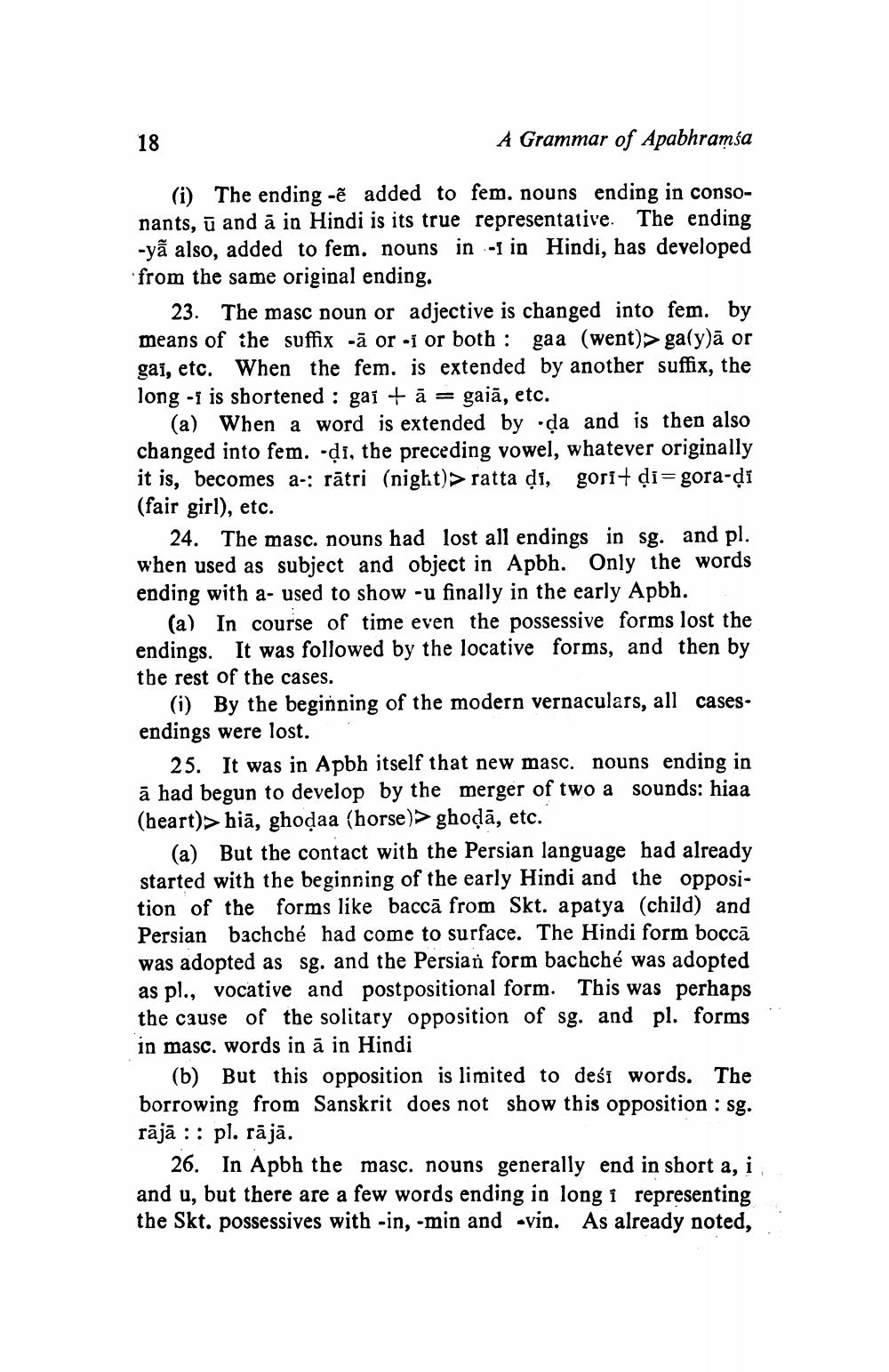________________
18
A Grammar of Apabhramsa
(i) The ending -ẽ added to fem. nouns ending in consonants, ū and a in Hindi is its true representative. The ending -yã also, added to fem. nouns in -1 in Hindi, has developed from the same original ending.
23. The masc noun or adjective is changed into fem. by means of the suffix -ā or -i or both : gaa (went)> ga(y)ā or gai, etc. When the fem. is extended by another suffix, the long -1 is shortened : gai + ā = gaia, etc.
(a) When a word is extended by .da and is then also changed into fem. •ļi, the preceding vowel, whatever originally it is, becomes a-: rātri (night)>ratta di, gosit di=gora-și (fair girl), etc.
24. The masc. nouns had lost all endings in sg. and pl. when used as subject and object in Apbh. Only the words ending with a- used to show -u finally in the early Apbh.
(a) In course of time even the possessive forms lost the endings. It was followed by the locative forms, and then by the rest of the cases.
(i) By the beginning of the modern vernaculars, all casesendings were lost.
25. It was in Apbh itself that new masc. nouns ending in ā had begun to develop by the merger of two a sounds: hiaa (heart)> hiā, ghodaa (horse)> ghodā, etc.
(a) But the contact with the Persian language had already started with the beginning of the early Hindi and the opposition of the forms like baccā from Skt. apatya (child) and Persian bachché had come to surface. The Hindi form bocca was adopted as sg. and the Persian form bachché was adopted as pl., vocative and postpositional form. This was perhaps the cause of the solitary opposition of sg. and pl. forms in masc. words in ā in Hindi
(b) But this opposition is limited to desi words. The borrowing from Sanskrit does not show this opposition : sg. rājā :: pl. rājā.
26. In Apbh the masc. nouns generally end in short a, i, and u, but there are a few words ending in long i representing the Skt. Possessives with -in, -min and -vin. As already noted,




